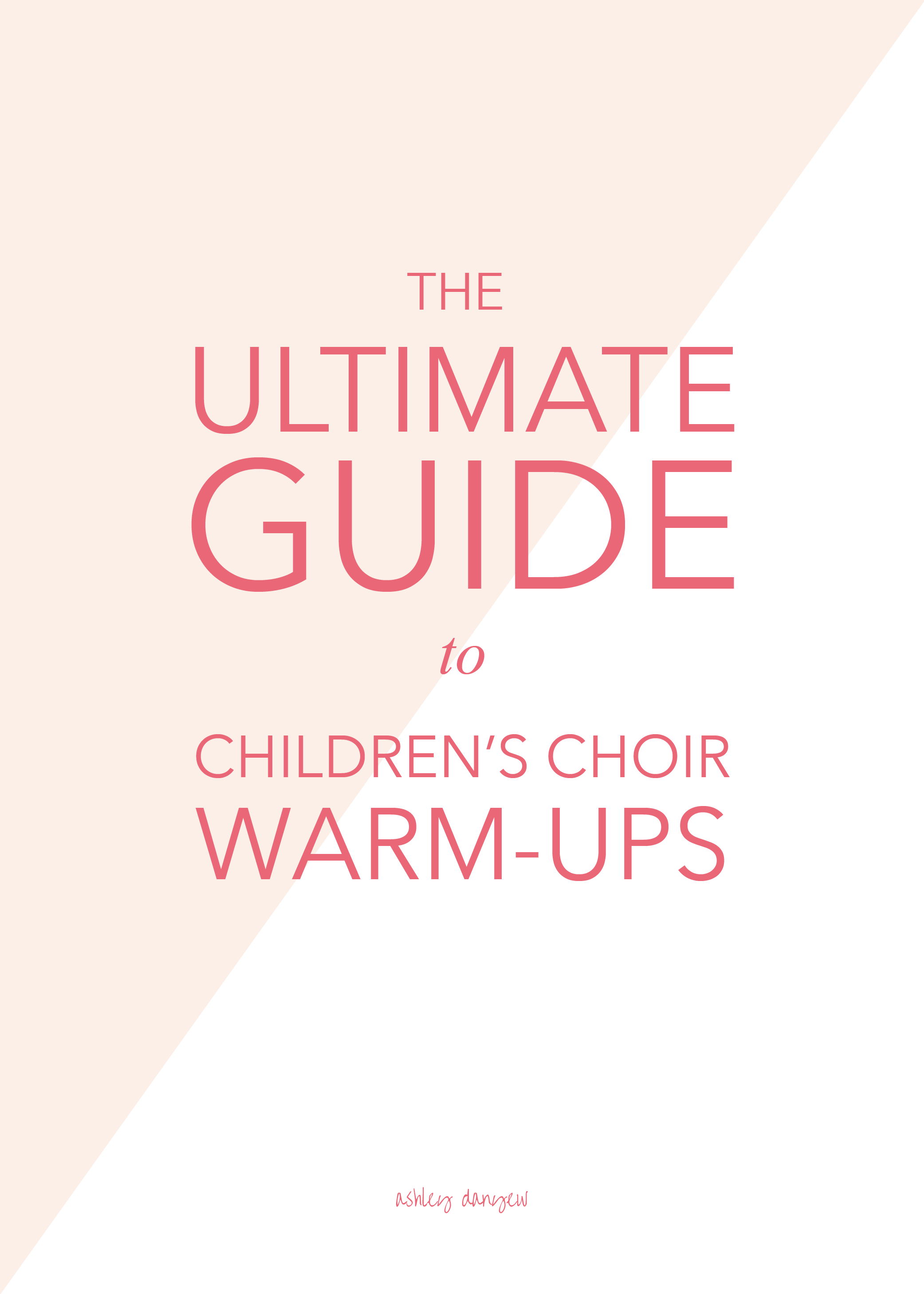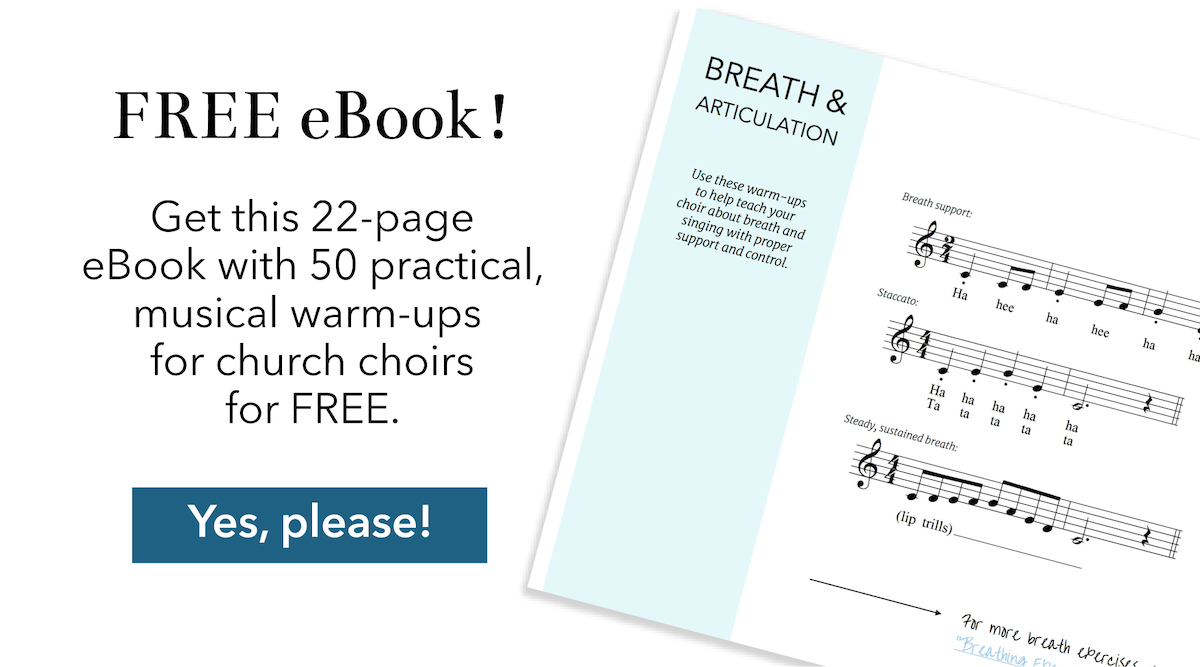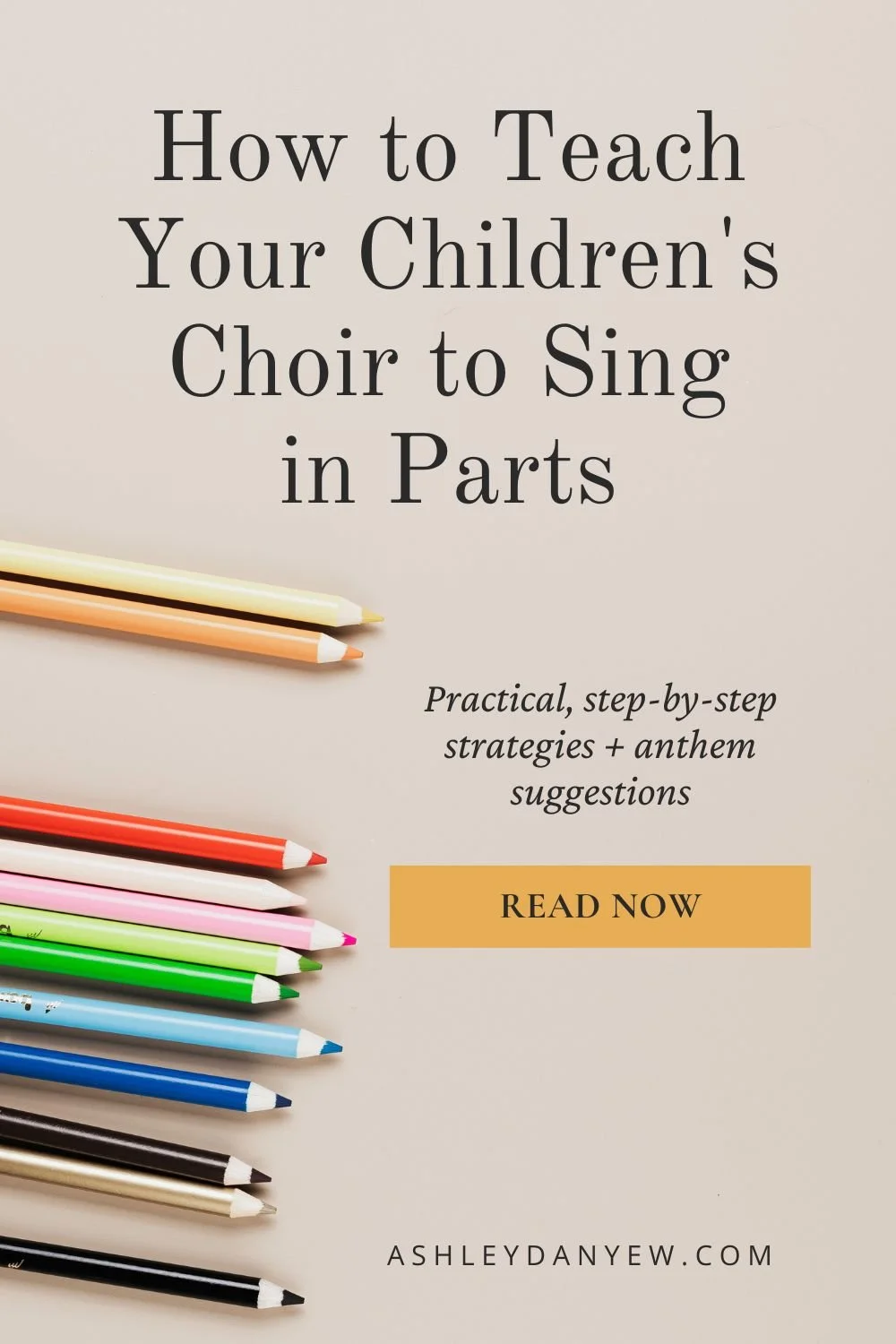Warm-ups are an important part of the choral-singing experience.
Just like in sports, the voice is a muscle that must be stretched and "warmed-up" before active use, but warm-ups also provide an opportunity to focus at the beginning of rehearsal and concentrate on breath support, tone production, and resonance.
Choral warm-ups are a great way to prepare new musical concepts (intervals, phrasing, melodic patterns, etc.), support vocal development, and foster the development of individual and collective musicianship.
"Warm-ups are where you teach your choir how to sing." - Josh Pedde, Indianapolis Children's Choir
Today, I'm sharing a comprehensive warm-up sequence geared toward young singers with tons of exercises and ideas for movement, breath, vocal exploration, tone production, vowels, energy and breath support, and diction. Happy singing!
The Ultimate Guide to Children’s Choir Warm-Ups
Movement
Start the warm-up sequence by stretching, relaxing the body, and getting focused. Try some of these motions:
Bend knees
Roll shoulders
Stretch up high, stretch down low
Lean right, lean left
March in place (quarter note beat)
March in place (half note beat)
Consider doing this sequence of activities in time while listening to a favorite recording (something upbeat with a prominent steady beat). Feel free to mix up the order and add some movements of your own!
At the end of the movement portion of warm-ups, remind singers to "stand tall" (instead of "stand up straight").
Breath
Exhale first, then inhale a fresh, new breath. If singers raise their shoulders when breathing, remind them to breathe deep and low. Have them put their hands on their shoulders to make sure they don't go up, and/or place their hands on their sides to feel the expansion.
Take a quick but deep, full breath (through the mouth). Can they do this silently?
Breathe in for 4 beats and hiss like a snake until all the air is gone.
Breathe in for 4 beats, hold for 4 beats, and pulse on "sh" for 8 beats. Try pulsing for 12 and 16 beats, if they can do it!
Vocal Exploration
Begin humming and chewing to loosen the jaw. Encourage singers to hum up and down (think roller coasters). (Note: singers should start where they feel comfortable - there is no set pitch for this activity).
Open to a vowel like "ooh" or "ah" or the word "zoom" and sing a few line-shapes together (click here to download a free set!). Ask for a volunteer to draw a shape for the class to sing!
Here are a few ideas for vocal exploration:
Sigh and/or yawn on an "ah" from the top of the range to the bottom (this raises the soft palate to create lots of space for resonance when singing).
Do a vocal siren. Start in the middle of the register and go up, then down. Mix it up with varying dynamics, speed, and range of the siren. Try three in a row (small, medium, large).
Hoot like an owl or sing an "ooh" vowel, blowing like the wind.
Chant a rhythmic speech exercise together, such as the "Jaybird Chant."
Use a slide whistle to create musical shapes. Have the children echo back on an "ooh" vowel.
Voy-oy-oy (descending 5-note scale with glissandi between each note)
Vowels
Move from vocal exploration to tone production with pure, rounded vowels.
Try having your singers 1) place three fingers in their mouth (vertically) when singing an "ah" vowel to encourage tall, open mouths; 2) place their pointer fingers at the corners of their mouth when singing the "ee" vowel to keep it from being too spread; and 3) hold their pointer fingers together out in front of them to bring the placement forward. (source)
Here are a few warm-up patterns that encourage beautiful tone production and tall, rounded vowels:
Repeated note pattern (mah meh mee moh moo / nah neh nee noh noo)
Scoo-bee, Doo-bee, Doo (ascending + descending 5-note scale). Add "doo wah" for the key change (tonic in one key + up a half step) and add jazz hands on the last note.
Sing 3-note solfege patterns with hand signs: sol-mi, sol-mi-do, sol-la-sol-mi, etc. If you show only the hand signs can they sing the pattern back?
Doo-bee, Doo-bee, Doo (13 24 35 42, repeated double-time)
Noah's Ark (53 42 31 27 1)
Descending 5-note scale. Sing on loo, ah, mee, or alleluia (ah-leh-loo-ee-ah), to incorporate more vowels. Try singing each note as a half or whole note (instead of quarter notes) with moving accompaniment underneath (see a video example with hand motions here - start at 0:47).
I love to sing (5-8-5-3-1)
Vowel vocalise (see video demonstration with motions here)
Energy/Breath Support
Encourage the connection between the breath exercises and tone production by incorporating a few warm-ups that focus on energy and proper breath support.
Here are a few ideas:
5434 531 (first part legato, second part staccato)
1 121 12321 etc. (ascending) + 1 171 17671 etc. (descending). Sing on numbers or solfege (Do, Do-Re-Do, etc.)
13 24 31 27 1 (staccato) on "bah"
5555 54321 (yah yeh yee yoh yoo / ha ha ha ha hoo). Sing the first four notes staccato (feel the pulse in your diaphragm.).
5555 5313 5 (staccato) on "hoo" (like an owl!)
descending + ascending broken triad (ving ving ving ving voh / zing zing zing zing zoh)
"The use of 'bah', 'ya', 'pah', and 'mah' in vocalises will . . . encourage the movement of the jaw from a closed to an open position." - Guillermo Rosabal-Coto (source)
Diction
Conclude your warm-ups with something a little silly and fun that gets them thinking about diction and clear consonants.
Here are a few tongue twisters and diction exercises to try:
Mommy Made Me Mash My M&Ms (ascending + descending 5-note scale)
Seven Sassy Sailors Sailed the Seven Salty Seas (5434 5434 5432 1)
Chester Cheetah Chewed a Chunk of Cheap Cheddar Cheese (repeated note)
Red Leather, Yellow Leather (repeated note)
Zing-a-ma-ma (repeat on each note of descending 5-note scale)
Peanut Butter (repeat on each note of descending 5-note scale)
A Few Considerations
Use the piano as little as possible. Kodaly suggested the piano may interfere with the choir's ability to tune and Alice Parker has championed a cappella singing throughout her career. If you use the piano to guide warm-ups up or down the scale, drop out when the choir is singing, then come back in to transition to a new key.
Sing lots of descending patterns. So much of the music children hear today is sung in chest voice. Encourage children to use their clear, bell-like head voice by singing descending patterns that start in head voice and carry it down.
Don't start too low. F major is usually a good starting place, either with a repeated note pattern on the F above Middle C or a descending 5-note scale beginning on Treble C. Vocalize up to G or A above Treble C and down to about Middle C.
Add hand motions. Hand motions are a great way to keep young singers engaged; encourage tall, rounded vowels and deep, low breaths; and add energy to the voice.
Looking for more?
Download this free eBook with 50 fully-notated choral warm-ups for church choirs.
What are your favorite children's choir warm-ups? Please share in the comments!







































